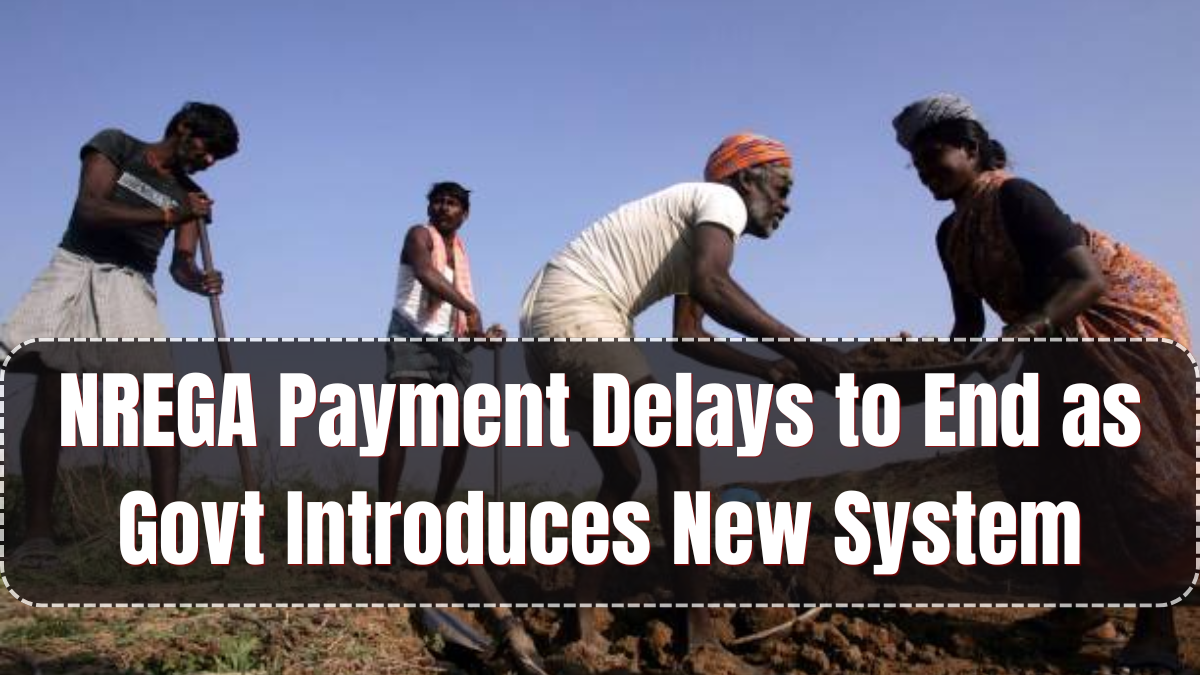In a major reform aimed at ensuring timely wages under the Mahatma Gandhi National Rural Employment Guarantee Act (MGNREGA), the government has rolled out a new digital approval system in 2025 to eliminate NREGA payment delays. This nationwide implementation promises greater transparency, faster fund transfers, and improved satisfaction among rural job seekers.
The new approval framework directly connects block-level data with central fund allocation using real-time digital dashboards. Workers across villages who depend on rural job opportunities for their livelihood can now expect their wages within the guaranteed timeline—typically seven to ten days post job completion.

Digital System for Faster Payments
The core of the new solution lies in an automated processing system introduced by the Ministry of Rural Development. It links the job card data, attendance records, and work completion status in a secure cloud database. This ensures that payment approvals are no longer delayed by manual errors, verification backlogs, or district-level fund request lags.
Key features of the system include:
-
Real-time attendance tracking via GPS-enabled mobile apps
-
Auto-generated muster roll submission
-
Aadhaar-linked payment integration with beneficiaries’ bank accounts
-
Centralised fund disbursement managed through a dashboard
-
Alerts to Panchayat offices in case of unusual delays
These technological upgrades ensure that every NREGA worker receives timely payment, reducing complaints and financial distress among rural job workers.
Improved Accountability and Worker Satisfaction
The introduction of this 2025 payment update has significantly reduced fund processing time. Where earlier some NREGA wages were delayed by weeks or even months, the new system ensures weekly disbursements with clear tracking for each transaction.
Moreover, supervisors and panchayat officials are now accountable under a timeline-based checklist. Failure to update work details or validate records within 48 hours triggers alerts to higher authorities. This has led to a 60% improvement in wage disbursement timelines in pilot districts since the launch.
Training and Awareness at the Local Level
To ensure the successful adoption of the new system, the government has conducted training sessions for village-level officers and field workers. Every Gram Panchayat has been equipped with digital kiosks to monitor job updates and wage statuses.
Bulletin boards and SMS alerts notify workers of payment progress. Field assistants are now equipped with mobile apps for instant attendance marking and record-keeping. These steps further reduce dependencies on paper documentation and help digitize the rural employment ecosystem.
Impact on Rural Employment Confidence
With over 7 crore active job card holders, NREGA remains a vital lifeline in rural India. The new rural job system reinforces the government’s promise of “Right to Work” by ensuring timely income, especially during the lean agricultural seasons.
Early reviews from beneficiaries highlight the ease of tracking wage status and the assurance that they will no longer have to wait endlessly or follow up with officials. The success of this payment reform is likely to encourage similar digital integration in other government-run wage programs.
FAQs
What is the new system introduced for NREGA payments?
The government introduced a digital approval system that connects attendance, work records, and payments in real time to speed up the wage transfer process.
When was the new NREGA payment system implemented?
The system was implemented nationwide in 2025 and is already active in all states and union territories.
How does the new system benefit workers?
Workers now receive their wages within 7–10 days after completing work. The digital process eliminates delays and ensures transparent tracking.
Are Aadhaar and bank account linking mandatory?
Yes, workers must link their Aadhaar number and bank account to receive timely NREGA payments under the new system.
Who is responsible for updating the attendance and work records?
Field assistants and Panchayat-level officers are responsible for real-time updates using mobile apps and centralised dashboards.
